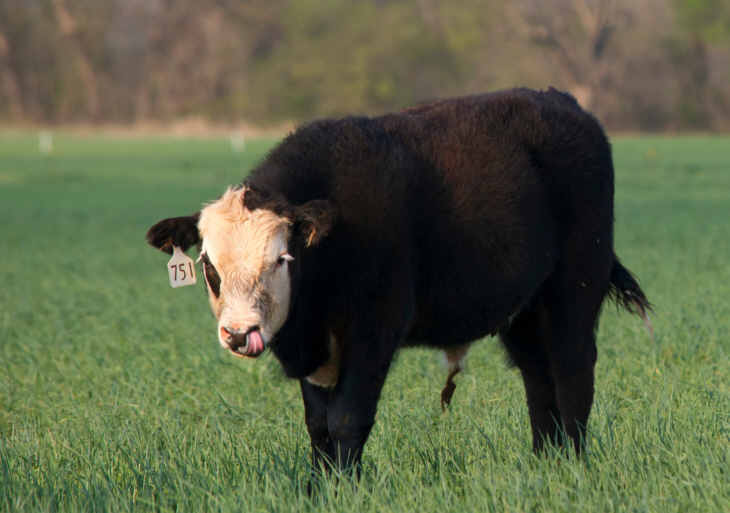
May is a season of percentages for cow-calf breeders
Monday, May 7, 2018
It is a numbers game for cow-calf producers at the start of every breeding season, and this year is no different than any other, even with extreme and exceptional drought conditions affecting much of the state.
May 1 often is the bull turnout date for many Oklahoma herds, reminds Glenn Selk, Oklahoma State University Cooperative Extension emeritus cattle specialist and managing editor of the popular OSU Cow Calf Corner newsletter.
“Cows that are cycling early in the breeding season are more likely to get bred this year, raise a heavier calf at weaning and rebreed on time in future years,” he said.
The most important factors that determine if and when a cow returns to cycling activity were most famously analyzed by Kansas State University physiologists. Over a period of 7 years, Wildcat scientists used more than 3,000 beef cows in estrous synchronization studies.
“As a part of these studies, they determined which cows were cycling before the start of the breeding season, both before and after synchronization treatments,” Selk said. “They then looked at the previous data about each cow and determined major factors that influenced the likelihood that the cow would have returned to heat by the start of the breeding season.”
The KSU research indicated three main factors were the most important determinants as to whether the cow would recycle before the breeding season began: body condition, age of the cow and the number of days since calving.
Body condition
Cows ranged in body condition score from one, extremely emaciated, to seven, very
fleshy. As body condition score increased the percentage of cows cycling increased
in a linear fashion. The KSU data reported there was an 18 percent increase in percentage
cycling for every one full body condition score improvement.
Age of the cow
The percentage of first calf two-year-old animals cycling was about 10 percent less
than mature cows that were having at least their second calf.
“The extra nutrient requirement for growth clearly limits the cycling activity at the beginning of the breeding season of two-year-olds,” Selk said.
In addition, two-year-olds are in the stage of life where the animal’s baby teeth are being replaced by permanent teeth. Some of these young cows have problems consuming roughage similar to “broken-mouth” older cows.
“This is why many producers choose to breed replacement heifers ahead of the cow herd and give them more days before the breeding season begins for mature cows,” Selk said.
Numbers of days since calving
KSU research showed cycling activity also was influenced by the number of days since
the cow had gone through calving. For every 10-day interval since calving, from less
than 50 days to 70 days, the percentage of cycling increased by 7.5 percent.
“A short calving season is important because it allows a higher percentage of cows to be cycling by the start of the next breeding season,” Selk said.
Oklahoma is the nation’s fifth-leading producer of cattle and calves, according to USDA National Agricultural Statistics Service data.
The Oklahoma Cooperative Extension Service is one of two state agencies administered by OSU’s Division of Agricultural Sciences and Natural Resources.
Story by Donald Stotts
